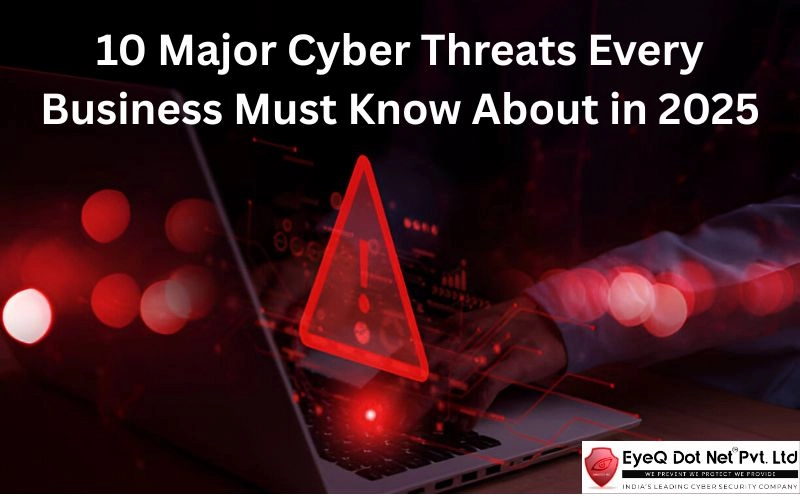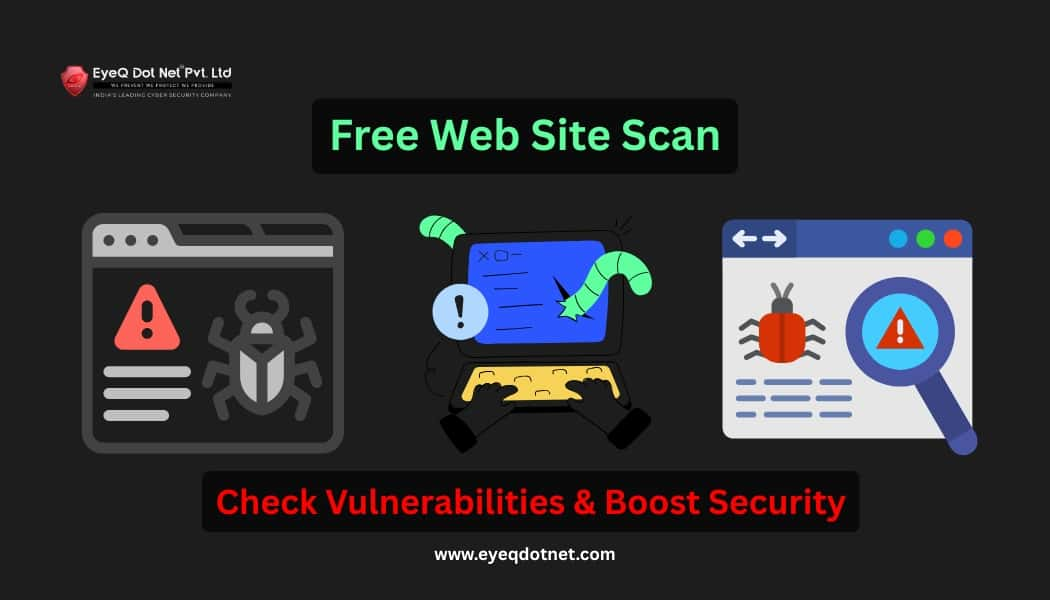In 2025, digital transformation continues to reshape the way businesses operate. But with this growth in technology comes an alarming rise in cyber threats. No matter the size of your business—startup, SME, or enterprise—you’re a potential target. Cybercriminals are getting smarter every day, using tricks like fake emails and powerful ransomware attacks.
Understanding the top cyber threats is no longer optional—it’s necessary for survival. In this blog, we’ll explore the 10 most critical cyber threats businesses must watch out for in 2025 and how to protect your digital assets.
10 Major Cyber Threats Every Business Must Know
1. Ransomware Attacks
Ransomware is a type of cyberattack where hackers lock or encrypt your files and demand money to unlock them. It remains one of the most dangerous threats in 2025. It locks you out of your own systems until a ransom is paid. Cybercriminals now use double extortion—encrypting data and threatening to leak it unless paid.
Many small businesses can’t recover from a ransomware attack due to data loss and downtime.
Always back up data regularly and invest in robust anti-ransomware solutions.
2. Phishing and Social Engineering
Phishing emails are getting harder to spot. In 2025, attackers are using AI to craft personalized messages that look incredibly real. One careless click can expose sensitive information.
Example A CEO receives an email that appears to be from the IT team asking to reset their password—classic phishing.
Prevention Tip: Train your team regularly. Use email filters and multi-factor authentication (MFA).
3. Supply Chain Attacks
Even if your business has strong cybersecurity, your vendors may not. Hackers target third-party software or services to break into your systems indirectly. This kind of cyber threat is hard to detect and even harder to stop once it begins.
Prevention Tip: Audit vendors for security practices and restrict third-party access.
4. Zero-Day Vulnerabilities
A zero-day vulnerability is a hidden flaw or bug in software that the company or developer doesn’t know about — which means there’s no fix yet, and hackers can take advantage of it.
Hackers exploit it before a fix is issued. In 2025, these attacks are more frequent, especially with open-source platforms.
Why It Matters: These vulnerabilities can go unnoticed for months, giving cybercriminals free access to your system.
Prevention Tip: Keep all software up to date and use a vulnerability scanner.
5. AI-Powered Attacks
AI is helping cybercriminals, too. In 2025, attackers use AI to automate attacks, crack passwords, mimic voices, and bypass traditional security measures.
Example: Hackers use deepfake audio to mimic a company executive’s voice and trick employees into sending money.
Prevention Tip: Use security tools that detect unusual behavior and stay updated on the latest tech-based threats.
6. Insider Threats
Not all cyber threats come from outside. Disgruntled employees or careless staff can accidentally or intentionally leak, delete, or misuse important company data, causing serious damage.
Disgruntled or careless employees can accidentally or intentionally leak, delete, or misuse important company data, putting the business at serious risk.
strong>Reality Check: Over 30% of data breaches involve internal actors—either intentionally or unintentionally.
Prevention Tip: Implement user access control, monitor user activity, and encourage a security-first work culture.
7. IoT Vulnerabilities
The Internet of Things (IoT) connects smart devices to your network—from printers to cameras. In 2025, many of these devices still lack strong security, making them a soft target.
Risk Factor: One unsecured device can provide a backdoor into your entire system.
Prevention Tip: Change default passwords, segment IoT devices from your core network, and update firmware.
8. Cloud Security Breaches
Cloud computing is convenient, but it’s not immune to cyber threats. Misconfigured settings, weak credentials, and lack of visibility lead to data leaks.
Stat Insight: Nearly 45% of cloud breaches in 2024 were due to misconfiguration—this trend is expected to continue in 2025.
Prevention Tip: Use strong access controls, encrypt data, and monitor cloud usage.
9. Credential Stuffing Attacks
This type of attack uses leaked username and password combinations from one breach to try and gain access to other accounts.
Example: If your LinkedIn password is leaked, attackers try it on your email or banking accounts.
Prevention Tip: Encourage employees to use password managers and enable MFA on all accounts.
10. Data Breaches and Information Theft
In 2025, data is more valuable than ever. Cyber threats like hacking, snooping, and malware are used to steal sensitive customer data, which is then sold on the dark web.
Cost of Ignorance: A single data breach can cost millions—not just in fines, but in reputation loss.
Prevention Tip: Use end-to-end encryption, conduct regular security audits, and stay compliant with data protection laws.
Why Businesses Must Stay Updated on Cyber Threats
The threat landscape is changing fast. Cybercriminals are evolving, and so must your defense strategies.Even a small cyber threat, if ignored, can cause serious harm—like financial loss, damage to your brand’s reputation, and legal trouble.
Quick Recap of Best Practices:
- Educate employees on cyber threats and safe online behavior.
- Use strong passwords and enable MFA.
- Keep all software and devices updated.
- Invest in cybersecurity tools and services.
- Perform regular penetration testing and audits.
Final Thoughts
As we move deeper into the digital age, the rise in cyber threats is a reality every business must face. But being informed is the first step to being protected. By understanding these ten major cyber threats and proactively strengthening your defenses, you can keep your business, data, and customers safe.
One effective way to stay ahead of threats is by using (vulnerability assessment and penetration testing) VAPT services in India. These services help identify security weaknesses in your systems before hackers can exploit them, giving you the chance to fix issues early and build stronger defenses.
Remember, cybersecurity isn’t something you set up once and forget—it’s a continuous process that needs regular updates, monitoring, and professional testing like VAPT to stay secure.

